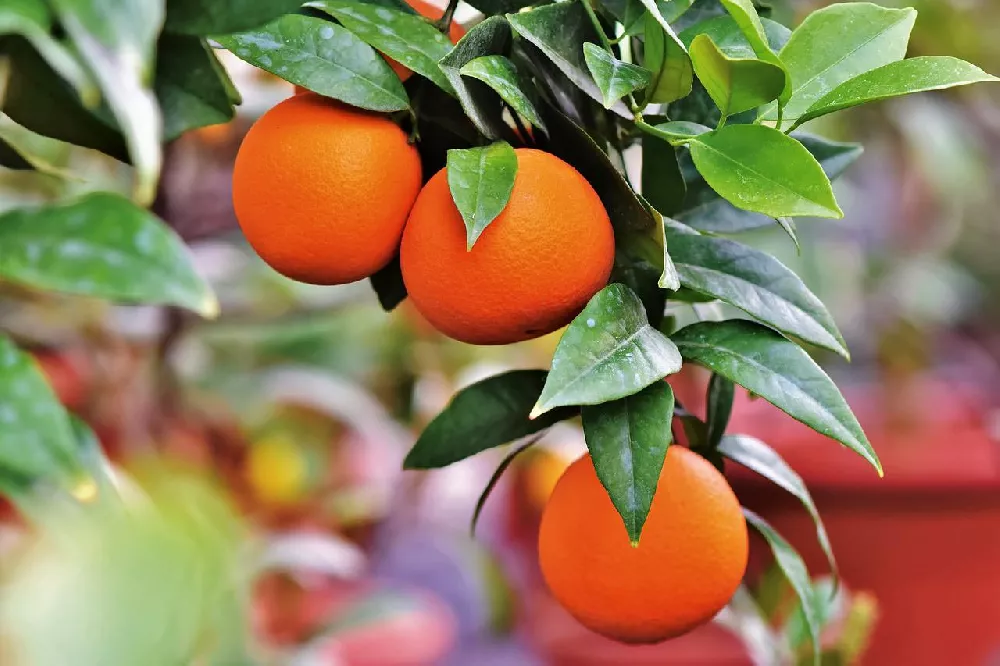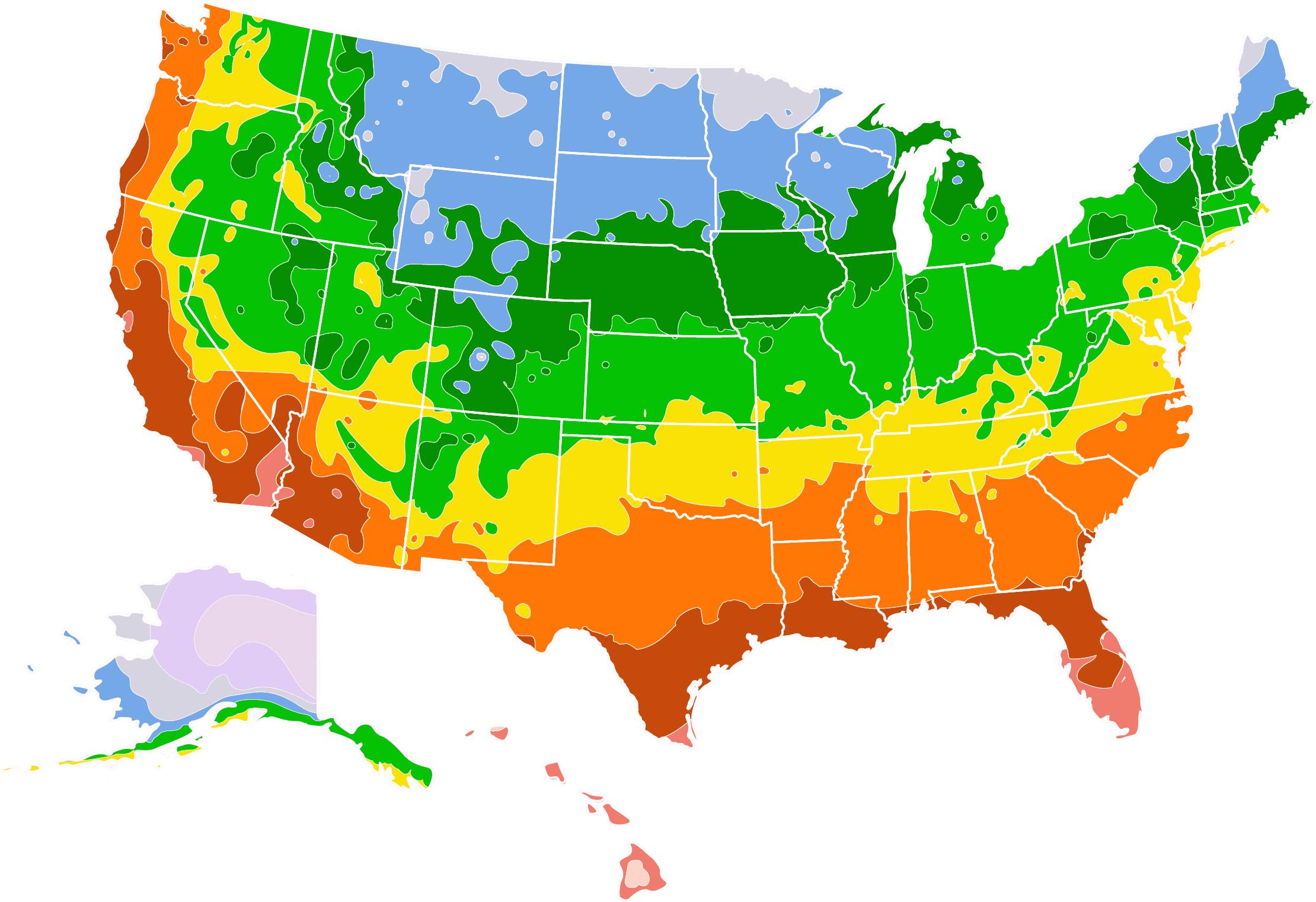- Home >
- Edible Plants >
- Valencia Orange Tree
Valencia Orange Tree for Sale - Buying & Growing Guide
- Ships in 1-2 days
- 1-Year Warranty Eligible
- Pots or accessories are not included unless specified in the product options.
Shipping Details:
Once your order is shipped, you’ll receive an email with a tracking number and estimated delivery date. Most orders ship immediately, but some items are seasonal and may only ship in spring or fall. These products are noted on the website.
Many people love the taste of an orange, but few take the time to grow one of their own in their garden. The variety of orange tree, known as Valencia orange tree, or Citrus sinensis 'Valencia', gives you the chance to do just that and supplies some of the best orange fruits you can find. These oranges are plump, tasty, and good for you as well. Best of all, the Valencia orange tree is one of the few orange tree varieties in-season during summer and can offer multiple harvests.
- Produces juicy orange fruits, sometimes with multiple harvests per year.
- Fruits offer fantastic health benefits, including a supply of vitamin C.
- Doesn't take too long before it reaches a fruiting age.
Plant Care
Sunlight

This tree requires full sunlight settings, at least six to eight hours of light per day.
Watering
Water your Valencia orange tree about once per week during the growing season.
Fertilizing

Apply fertilizer about two to three times per year. Use a mix that has plenty of nitrogen.
Planting and Care
Planting instructions
Before planting a Valencia orange tree, you need to find a location that receives plenty of direct sun exposure each day. The area should also have excellent soil drainage as well. Dig a hole that is considerably wider than the root ball and a bit less deep than the root ball is tall. Those growing this plant in zones 8 or warmer can do so outdoors year-round. Anyone in a cooler climate should overwinter their Valencia orange tree in a large enough container to give the root system plenty of space.
Watering and nutrients
After planting a Valencia orange tree, water it multiple times per week. Once the tree has become established, you can reduce your watering schedule, but remain consistent. A weekly watering during the growing season should make for ample fruit production. Fertilize this plant in the early spring, late spring, and once again later in the season. You can use a fertilizer that is marketed for citrus trees, or you can choose a general-purpose mix that has equal amounts of each main macronutrient.
Pollination
Like many citrus trees, the Valencia orange tree relies on insects to conduct pollination. Likewise, these plants are self-fertile, meaning that you don’t necessarily need to have more than one to produce fruit. Despite that, having more than one Valencia orange tree will only increase and improve your orange production. Having multiple trees usually makes for better quality fruits than if you only have one. The flowers arrive in spring and, after receiving pollination, give way to a relatively long fruit harvest.
Pruning
Valencia orange trees will often survive in the absence of judicious pruning. However, there are several benefits to performing a seasonal pruning job. You can prune this plant either at the very beginning of the season, before the bloom time, or after the fruits have been harvested. In either case, you should focus on removing any part of the tree that shows significant damage or signs of decline. You should also prune to promote a stronger form that will be better capable of holding the fruit to come.
Pests, diseases, and animals
There are several pests and diseases that can be bothersome for a Valencia orange tree. In the former case, leafminers, aphids, and mites are among the insects that can cause infestation. Regarding disease, there are several fungal and bacterial infections that can take place. One of the most common infections, which afflicts many citrus fruits, is citrus canker. You’ll notice spots of discoloration on your plant’s leaves if it contracts this illness. Such problems are often the result of excessive heat and humidity, but there can be other causes.
Harvesting
A Valencia orange tree will be ready for harvest from late spring through the summer. During this time, the tree may produce one or two distinct harvests for you to enjoy. When a Valencia orange is ready to be picked, it will have a bright orange color, as you would expect, and it should be relatively plump and give off a pleasant fragrance. Removing these fruits is quite easy. You can use your hands to loosen a harvestable orange, and it should detach from the branch with ease.
Achieving maximum results
There are a few keys to getting the most out of your Valencia orange tree. First, you should ensure that this tree remains warm and in full sun exposure. Generally, the more warmth and light this tree receives, the better its fruits will be. You should also be aware of the many pests and diseases that can befall this plant. Many of these issues will affect the quality of your fruit and may also threaten the life of your tree. Remain vigilant and treat these problems right away to keep your tree as healthy as possible.
FAQs
How long does it take a Valencia orange tree to bear fruit?
A brand new Valencia orange tree will reach a fruiting age at only about 3 or 4 years old. However, it can take some time before the fruit reaches maturity. At times, it may take more than 12 months for the fruit to reach an age at which it is ready for harvest. But if you are patient and give this tree the care it needs, it won't take long to begin developing healthy fruits.
Can Valencia orange trees withstand the cold?
One of the problems with growing a Valencia orange tree is that these plants are not tolerant of the cold. This species will struggle to survive whenever the air temperature dips below 60 degrees Fahrenheit. Those in warm climates, including Florida and California, won't have too much trouble growing this plant outdoors. But those who live in colder areas will need to overwinter this plant to protect it from cool weather.
Can you transplant a Valencia orange tree?
Transplanting a Valencia orange tree is possible and will likely be necessary if you grow one indoors. Over time, this plant will reach the extent of its container and require a larger growing area. Before that time comes, you should move your plant to a larger pot. The best time of year to do this is in the spring or the fall, when the temperatures are more moderate and conducive to transplanting.
Compare Similar Products
You can't add more Product Name - Product size to the cart.
OK







